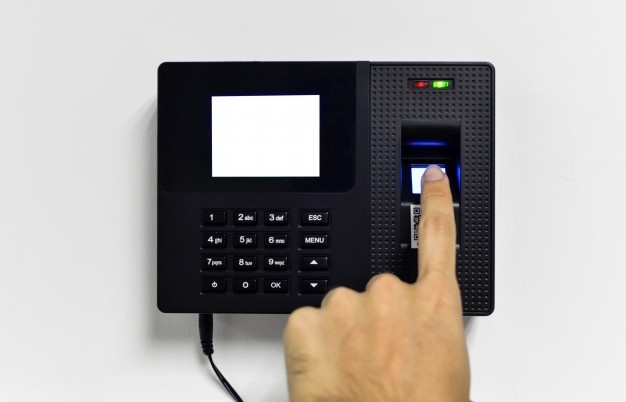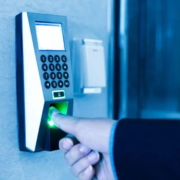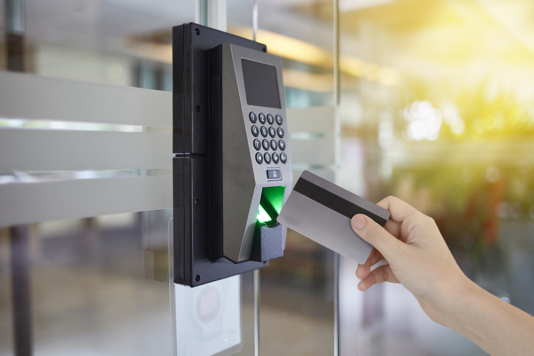Fingerprint Access Control: Beyond Traditional Security Methods
Have you ever fumbled for your keys in the dark, desperately searching through your bag whilst balancing a coffee and laptop? Or perhaps you’ve experienced that sinking feeling when you realise you’ve left your access card at home? What if there was a security solution that eliminated these everyday frustrations whilst improving your building’s safety?
Welcome to the world of fingerprint access control – a technology that’s transforming how we think about security in Australian workplaces and beyond. This comprehensive guide explores why traditional security methods are falling short and how biometric solutions are stepping up to meet modern challenges. We’ll examine the science behind fingerprint technology, weigh up the costs and benefits, and help you determine whether this innovative approach is right for your organisation.

Fingerprint Access Control
Why Traditional Security Methods Are No Longer Enough
Let’s face it – the humble key has served us well for centuries, but in today’s fast-paced business environment, it’s showing its age. Traditional security methods like keys, cards, and PIN codes were designed for a simpler time, before we had to worry about sophisticated security breaches and the need for detailed access logs.
The reality is that keys can be copied at any hardware shop for a few dollars. Access cards can be shared, stolen, or cloned with relatively simple equipment available online. PIN codes? They’re often written on sticky notes or shared amongst colleagues, completely defeating their purpose. These traditional methods also create administrative nightmares – think about the last time someone lost their keys, and you had to rekey an entire building.
Modern businesses need security solutions that can adapt to hybrid working arrangements, provide detailed audit trails for compliance, and scale efficiently as the organisation grows. That’s where fingerprint access control comes in, offering a level of security and convenience that traditional methods simply can’t match.
What Is Fingerprint Access Control and How Does It Work?
The Science Behind Biometric Authentication
At its core, fingerprint access control uses the unique patterns on your fingertips as a personal key that can’t be lost, stolen, or forgotten. All person’s fingerprints are unique – even identical twins have different prints. These patterns, formed in the womb and remaining unchanged throughout life, make fingerprints an ideal biometric identifier.
When you place your finger on a scanner, the system captures specific details called minutiae points. These include ridge endings, bifurcations (where ridges split), and other distinctive features. The scanner doesn’t store an image of your fingerprint; instead, it creates a mathematical template based on these unique characteristics.
This template is then compared against stored templates in the system’s database. If there’s a match within acceptable parameters, access is granted. The entire process typically takes less than a second – faster than fumbling with a key or card.
Types of Fingerprint Scanning Technology
Not all fingerprint scanners are created equal. Optical scanners, the most common type, use light to capture a fingerprint image. They’re reliable and cost-effective but can sometimes struggle with dirty or damaged fingers. Capacitive scanners, like those in many smartphones, measure electrical differences between ridges and valleys in your fingerprint. They’re more secure but typically more expensive.
Ultrasonic scanners represent the cutting edge of fingerprint technology. They use high-frequency sound waves to create a detailed 3D map of your fingerprint, making them extremely difficult to fool with fake prints. Some advanced systems even detect blood flow or temperature to confirm a living finger is present.
The choice of scanner technology depends on your security requirements, budget, and environmental factors. A construction site might need robust optical scanners that can handle dusty conditions, whilst a research facility might invest in ultrasonic scanners for maximum security.
How Fingerprint Systems Process and Store Data
One common misconception is that fingerprint systems store actual images of your fingerprints. Modern systems use sophisticated encryption to store only mathematical representations. When you enrol in the system, your fingerprint is converted into a unique code that can’t be reverse engineered to recreate your actual fingerprint.
This data is typically stored in secure, encrypted databases either on-site or in the cloud. Many systems use additional security measures like blockchain technology or distributed storage to prevent tampering. The actual matching process can happen locally at the scanner or centrally at a server, depending on your system configuration.
Australian privacy laws require businesses to handle biometric data carefully. Reputable fingerprint access control systems are designed with privacy in mind, incorporating features like automatic data deletion after employment ends and strict access controls on who can view or modify the database.
The Evolution from Keys and Cards to Biometrics-
The Limitations of Traditional Access Methods
Traditional access methods have served us well, but their limitations are becoming increasingly apparent in our connected world. Keys offer no audit trail – you can’t tell who used a key or when. They’re easily duplicated, and losing a master key can compromise an entire building’s security. Rekeying locks is expensive and disruptive, especially in large facilities.
Access cards improved on keys by providing electronic logs and the ability to instantly revoke access. However, they introduced new problems. Cards can be shared, allowing unauthorised access whilst appearing legitimate in system logs. They’re also vulnerable to cloning attacks, where criminals copy card data to create duplicates.
PIN codes and passwords add another layer of security but come with their own headaches. People forget them, write them down, or share them with colleagues. Strong passwords are hard to remember, whilst simple ones are easy to guess. Plus, entering a PIN takes time and can create bottlenecks at busy entry points.
Why Businesses Are Making the Switch
Australian businesses are increasingly recognising that biometric systems address these fundamental flaws. You can’t lend someone your fingerprint for the day, and you certainly can’t leave it at home by accident. This eliminates buddy punching in time and attendance systems, reduces security breaches, and creates indisputable audit trails.
The COVID-19 pandemic accelerated adoption as businesses sought contactless solutions. Modern fingerprint scanners don’t require physical contact – you simply hover your finger above the sensor. This addressed hygiene concerns whilst maintaining security. Many organisations found that upgrading to biometrics during their COVID response planning improved their overall security posture.
Cost considerations are driving adoption too. Whilst the initial investment might be higher than traditional systems, the total cost of ownership often favours biometrics. No more replacing lost cards, changing locks, or dealing with security breaches caused by compromised credentials. The administrative burden drops significantly when you don’t have to manage physical tokens.
Real-World Success Stories from Australian Companies
Take the example of a major Melbourne hospital that switched to fingerprint access control in their pharmaceutical storage areas. They eliminated drug theft, improved compliance reporting, and saved thousands annually on card replacements. Staff loved not having to carry multiple access cards for different areas.
A Brisbane-based tech company implemented fingerprint access after a security breach involving a stolen access card. Not only did they prevent future breaches, but they also integrated the system with their time-tracking software, streamlining payroll and eliminating time theft. Employee satisfaction increased because staff no longer worried about forgetting their cards.
In Perth, a mining services company uses fingerprint scanners at their equipment yards. The harsh environment destroyed magnetic cards quickly, and dust made PIN pads unreliable. Robust fingerprint scanners solved these problems whilst providing detailed logs of who accessed valuable equipment and when. This proved invaluable for both security and maintenance scheduling.



